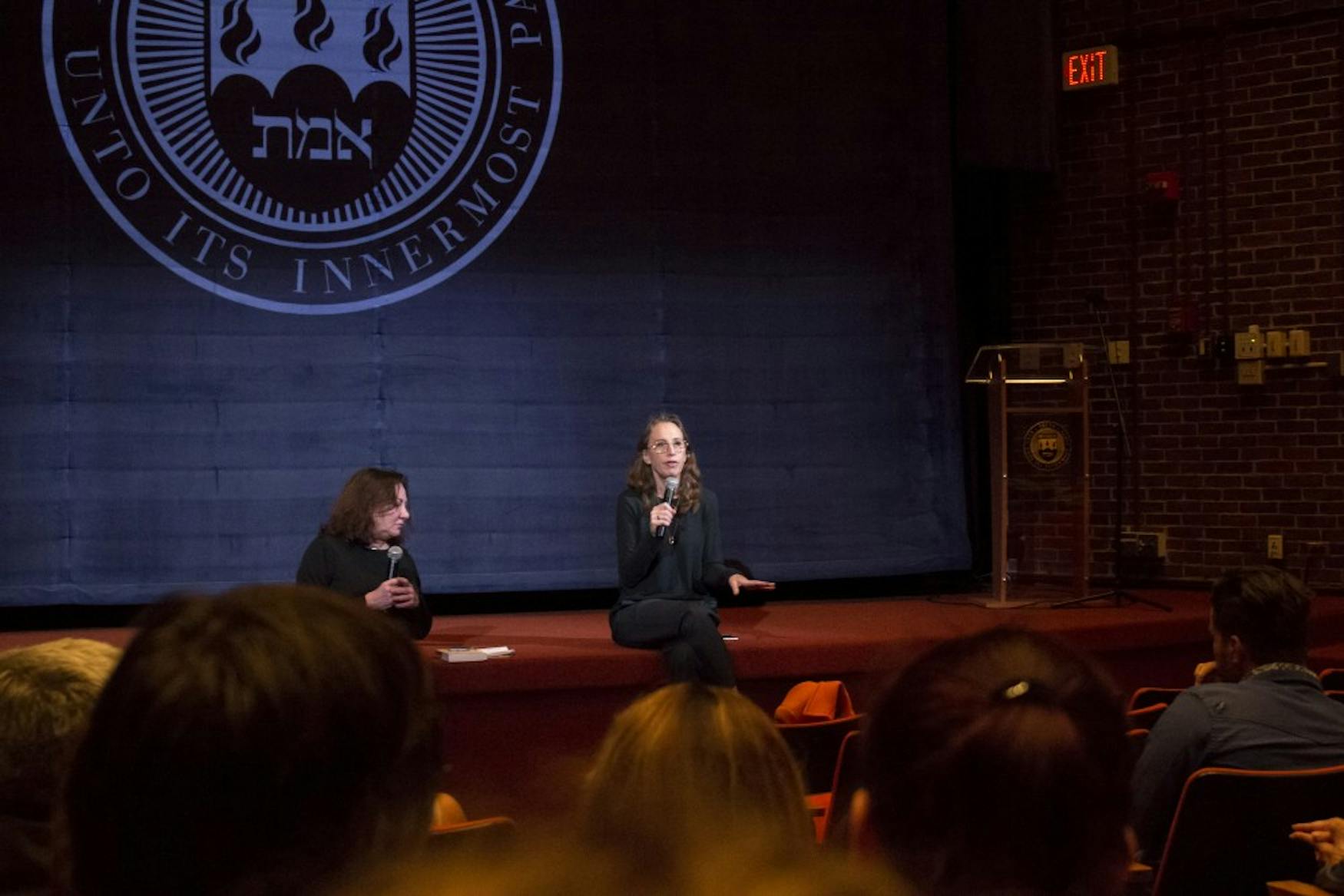'Bel Canto' transitions from paper to screen
The University’s Film, Television and Interactive Media Program hosted a screening in Wasserman Cinematheque of Paul Weitz’s “Bel Canto,” a film adaptation of its 2001 namesake thriller by Ann Patchett, on the eve of the movie’s release on Amazon Prime. Based on a real 1996-97 hostage crisis in Lima, Peru, the film takes place in a Vice-Presidential manor that is overrun by Latin American freedom fighters. The wealthy dinner guests are trapped by hostile guerilla fighters in a house with little to do. With their lives left in the hands of a Red Cross negotiator, sparks fly, relationships are formed and secrets are revealed. The screening was made possible due to producer and Brandeis alumna Caroline Baron ’83.
Baron revealed that the film was a 17-year passion project inspired by the events of Sept. 11, 2001. She wanted to explore the humanization of on-screen terrorists at a time when most of them were one-dimensional antagonists. In the post-screening Q&A session, she expressed that “we need this movie now more than ever.” Upon reading “Bel Canto” and falling in love with its characters, she decided that adapting this story would be an appropriate way to open up a dialogue in a post-9/11 world. The packed cinematheque was mostly comprised of avid fans of the book ready to watch their beloved characters come to life.
Having never read the novel, I was informed that apart from altering the ending, the film was a very faithful adaptation. However, this by no means determines the quality of the movie. “Bel Canto” suffers from the medium to which it was adapted. The myriad inner monologues and nuanced storytelling would make sense in a novel, but get lost as “Bel Canto” transitions to the big screen.
Almost every other aspect of the filmmaking is on par with a standard romantic drama. The production design transformed a house in Yonkers, New York into a Latin American mansion. The makeup and costuming are elegant. Apart from a few flat scenes and fluctuations in the lighting, the cinematography is smooth and cinematic.
The Q&A session revealed that “[Patchett] took a back seat” while the screenplay was being written, only providing input at the beginning of the production process. Consequently, the love that blossomed between the characters feels forced. The film does not do justice to what I imagine were poignant and sensual relationships in the novel. The rushed interactions are laughable at times, particularly those between a female captor and male captive. Though the many languages present throughout the film champion diversity, they disrupt the flow of the story when conversations are repeatedly funneled through a translator.
The surface-level attempts to humanize the terrorists are not executed well, either. There are shots of an underage soldier; a leader who wants to free his comrades (one of whom is his wife) from jail; a soldier gets caught singing, thus forming a relationship with the captive opera singer. All of these could have escaped clichés if they were given more depth. The trust and care built between the captive and the cap felt fabricated. The accidental murder of a Swedish captive and the guerrilla leader’s children being in Sweden, for some reason, almost felt like subtle nods to Stockholm syndrome, a condition that is completely disregarded by this film to make the characters seem sympathetic.
There are movies, though few and far between, that have properly executed the idea of a sympathetic captor in a hostage situation. “Dog Day Afternoon” and “Captain Phillips” come to mind. The former portrays its bank robbers as sympathetic because they were afflicted by problems that were taboo for the 1970s; the latter addresses these problems and the lengths to which a man and his crew, old and young, will go to survive in a land void of justice. Unlike these films, the captors in “Bel Canto” have vague goals and do not merit commiseration.
Upon leaving the theater, I heard much praise that simply did not make sense to me. This disconnect may be because fans of the novel were satisfied by the accuracy of the adaptation, filling in the character motivation blanks with information only available in the book. Overall, the film has some ridiculous relationships that need to be fleshed out more; I recommend reading the book first. I’ve heard nothing but good things, and you’ll get a lot more out of the film than I did.



Please note All comments are eligible for publication in The Justice.